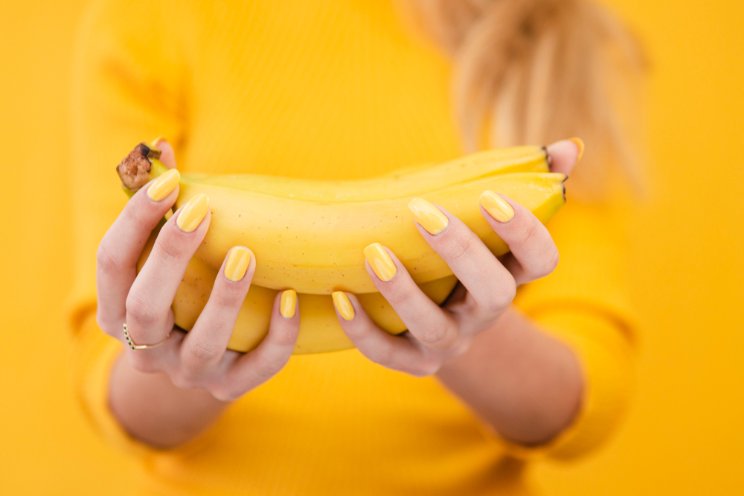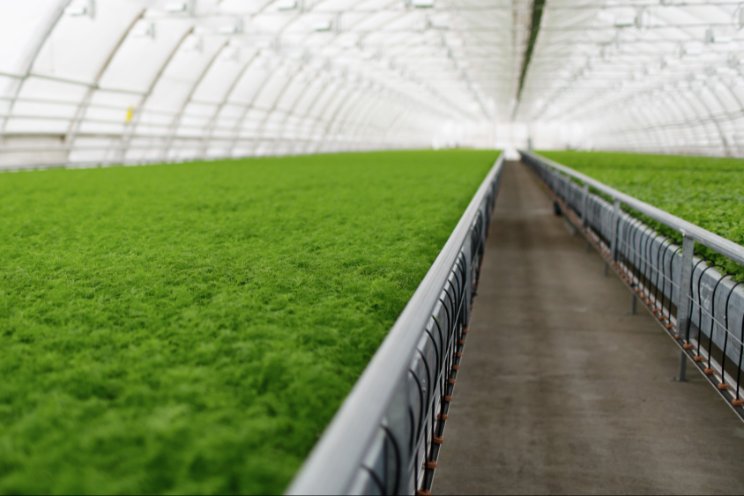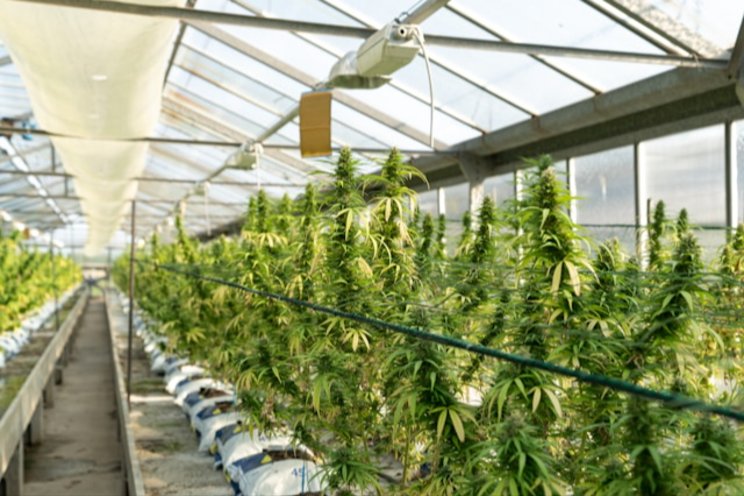Young LED specialist brings research background, passion
Added on 08 September 2020

Simply put, Colin Brice was built for this.
Signify's (formerly Philips Lighting) newest plant specialist, Brice carries a keen focus on advancing the manufacturer's burgeoning horticultural LED business. It is practically a perfect fit for the recent grad: his undergraduate and post-grad experience at the University of Tennessee both revolved around horticultural LED lighting and its application to improve crop quality.
"I was given the chance to work with Dr. Dean Kopsell, whose academic publications have greatly advanced the field of horticultural lighting in recent years," Brice says. "We completed experiments testing the effects of narrow-band LED wavelengths on secondary metabolite and nutrient content in several crops."
Additionally, Brice's graduate thesis focused on controlled narrow-band lighting in hydroponic young-plant production, where he reportedly "compared various LED spectra based on resultant yields and electrical efficiencies to form a more cost-based yield analysis."
Sounds like the perfect proving ground for what's in store for Brice throughout his still-young career in the commercial horticulture industry.
"A grower-focused research approach is something that Philips strives for, and I think it is especially important in scientific horticultural research to stay rooted in commercial practice," he adds. "My experiences have left me with a passion for conducting research that brings practical advantages to growers, whether from increased productivity, product quality, or resource-efficiency."
We recently caught up with Philip's newest horticultural LED specialist to see what it's been like starting his new role during the COVID-19 era, what he and his new team have been working on in the meantime, and where he sees the LED segment headed in the next few years.
Question: What has it been like starting this new role during the coronavirus work-from-home situation? Have you been able to travel at all? Do you feel like the experience has been what you always thought it would be?

Photo courtesy of Philips
Colin Brice: It has been a bit surreal, to say the least. At Philips we have made tremendous efforts to pivot our strategy to support our customers more efficiently in these new circumstances. We have been undergoing limited travel and are able to travel by car to visit growers. As a Signify plant specialist, my responsibility is to support growers growing under our LED grow lights, which can include advising on cultivation strategy, providing in-person growth consultation, and collaborating on crop production planning. In the time of COVID, one of the biggest challenges is my ability to reach growers in a form or manner that is as efficient and productive as in normal times. This would include seeing the operation, walking through the greenhouse, observing the crops, and talking to face-to-face with head growers, production staff, directors, and even owners.
Although we are not travelling as much as normal, we are staying connected. Admittedly, it is not the exact experience I was expecting before COVID-19 came into the picture. Although, there are some unexpected benefits to supporting remotely. I collaborate closely with our network of global plant specialists, engineers, and technical advisors for support where it may otherwise be slightly more difficult without a remote-centered work environment. I think I speak for the whole team, however, when I say that we are eager to travel and be face-to-face with growers and customers.
Q: LEDs are really making headway in ornamental circles as growers continue adding them to supplement their DLIs from the sun. Do you have any new research findings to share in this area that ornamental growers would find interesting?
CB: LED grow lights are shifting into the forefront of greenhouse artificial lighting technology. The commercial industry is starting a widespread shift from HID to LED lighting due to the numerous advantages LEDs offer. Recent advances in research have resulted in optimized light recipes for specific crops, improved cultivation practices under LED grow lights, and more energy-efficient fixtures. The color composition of the light spectrum or "light recipe" can be customized to a specific application. We can control the amount of blue, red, and far-red light in the spectrum, allowing for customized application methods depending on the operation. Working with young plant propagators, we create more compact and sturdy plants with improved root systems by adjusting the percentage of blue light in the spectrum.
A large installation converting grow lights from HPS to LED can pay itself back in two to three years and begin increasing profit through increased energy efficiency and/or crop production, depending on the installation. Philips is starting to use crop response models from years of research to create reliable models for the return on investment over a five-year period compared to HID fixtures. Philips brand LED grow lights can emit up to 3.2 µmol/J versus 1.7 µmol/J from an HPS fixture. So, we can apply the same light intensity as HID fixtures using 40% less energy. Conversely, light levels can be increased by up to 80% relative to HID lamps without increasing energy consumption, allowing increased plant growth rate at a similar or lower energy cost. After proving the cycle time reduction in several grower trials, growers are now benefitting from LED's in their operation.
Q: Energy consumption has always been, and will likely continue to be, one of growers' top concerns when it comes to any lighting system add-on. Do you have any tips or strategies to help greenhouse growers deploy their supplemental lighting more efficiently?
CB: Reducing energy costs is very important, and I agree that it is a top concern of growers regarding the lighting system as well as the overall facility. The obvious first thing that comes to mind is the fact that LEDs are nearly twice as efficient as HPS lights. Secondly, what comes to mind is to only apply light in the periods of the year when the crop needs to compensate for reduced light. We normally advise only lighting the crop in weeks receiving less sunlight than is optimal for the crop. During the periods of the year when light levels are reduced, we calculate a sort of "lighting calendar" as a precise reference for when to use the lights most efficiently.
You can decrease overall energy costs through decreasing overall lighting hours, but it is ideal to concentrate light usage to ideal climate situations and periods of low light. Plants can use light optimally when all growth factors are in balance. This means that the greenhouse temperature and humidity should be steered, such that the plant can optimally use the applied light. For instance, we recommend switching on the lights after warming the plants from nighttime temperatures and when below a corresponding humidity level, given that the natural light intensity is below the crop threshold. This improves the conversion efficiency from light into plant growth and maximizes the increased production capacity from the supplemental light.
Q: Any thoughts on the proliferation of smart lighting fixtures that integrate the lighting apparatus with sensors/cameras and artificial intelligence/algorithmic computing capabilities to deliver notifications and recommendations to help growers more efficiently manage a crop? Are these type of systems really here to stay?
CB: It is incredible to imagine the potential scale of such technology in monitoring, displaying, and controlling vast amounts of cultivation area to allow more informed management decisions while increasing production efficiency. I spent a large amount of time working with integrated monitoring and control circuits that used sensors to display information and allow responsive control of heating, irrigation, cooling systems, etc.
We are starting to see systems that control lighting installations and precisely monitor growth conditions for display and control by management. For example, control systems may be used in indoor city farming to integrate lighting with automated planting, crop monitoring, and harvesting. In some vertical farming operations, these control systems make management decisions themselves where nearly all parts of the cultivation process are automated. Vertical farming applications may take on a form of their own. This is because indoor growing allows growers to control climate uniformity more easily at any time, any day, any month; it doesn't matter if it's May or November.
Greenhouse growers, on the other hand, must heavily manage the unpredictability of Mother Nature including natural light levels, temperature, and humidity. Currently, greenhouse systems differ from those indoors due to the increased pressure of exterior climate patterns, and greenhouse growers are focused on improving the stability of their production environment. Climate stability is often achieved by integrating lighting, screening, and cooling system controls. Therefore, we will likely see the adoption of highly advanced integration controls at different speeds and in different forms based on the application setting.
Q: What are you currently the most excited about as far as product developments slated to hit the market? What are you guys working on with LEDs that you think ornamental growers will be excited to learn about?
CB: In greenhouse cultivation, I am most excited for our dimmable LED solutions that allow precise control of light intensity in response to changes in solar radiation levels. The Philips LED Toplighting Linear, Toplighting Compact, and Production Module grow lights are now available with dimming capability through integration with a GrowWise Control System. Dimmable lighting is an especially important factor to crop production stability, giving the grower even better control over the light levels and daily light sums. For instance, the LED light level can be automatically adjusted to the outside radiation, immediately ramping up in periods of cloud cover. This advancement increases year-round consistency of crop quality and production capacity for growers in regions with high variation in natural light levels.
Source: Greenhouse Management
Photo: Colin Brice.
Courtesy of Philips
Source: Greenhouse Managament
More news















